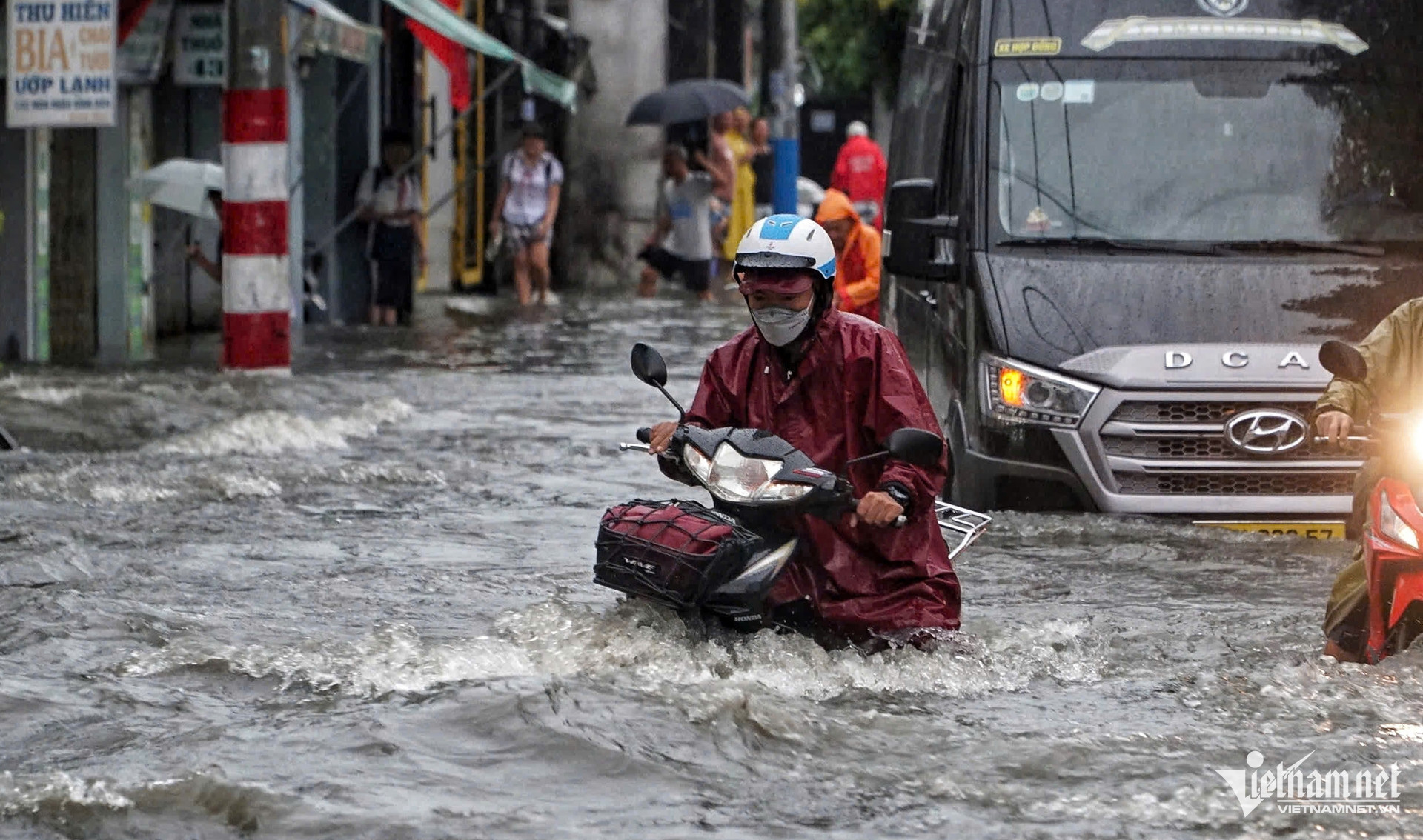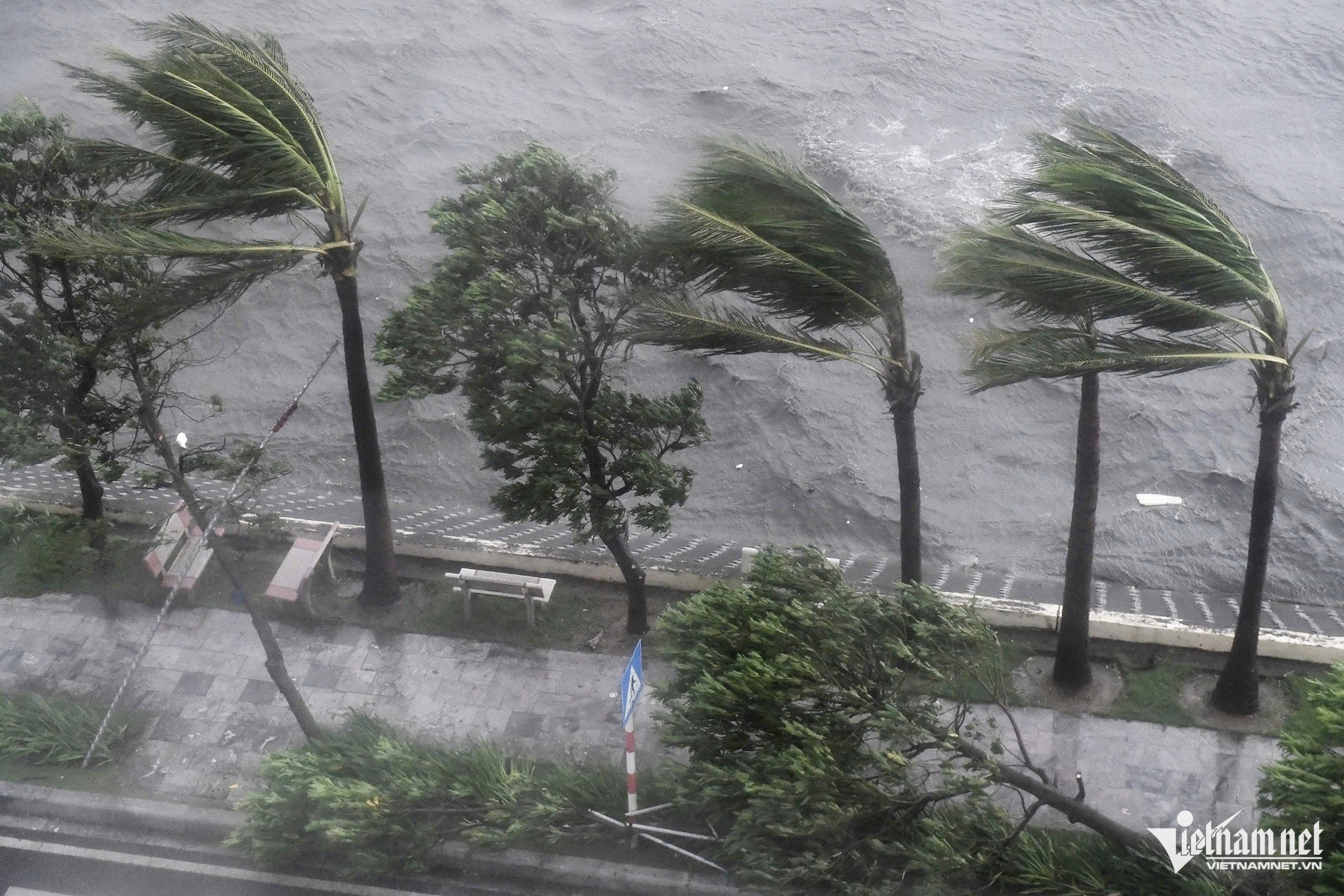Although powerful storms like Yagi are unlikely this year, the 2025 rainy and storm season in Vietnam is expected to be highly unpredictable in terms of intensity and trajectory. Localized downpours, flash floods, and landslides remain a significant nationwide risk.

Heavy rainfall on May 10 caused severe flooding across Ho Chi Minh City. Photo: Nguyen Hue
According to Hoang Phuc Lam, Deputy Director of the National Center for Hydrometeorological Forecasting, the rainy season is already showing signs of abnormality.
In May, heavy rainfall is expected particularly in the southern region. Total rainfall in the northern mountainous areas, Central Highlands, and southern Vietnam is forecast to be 5–25% higher than the long-term average. In contrast, Central and South-Central regions may see rainfall 5–20% below average.
“This transitional period may bring thunderstorms with large rainfall volumes, along with dangerous weather phenomena such as whirlwinds, lightning, hail, and strong gusts,” Lam emphasized.
While a storm may form over the East Sea in May, Lam said the likelihood of it affecting Vietnam’s mainland remains low.
Heavy rains hit southern and Central Highlands regions
Referring to the intense rain on May 10, Lam reported over 100 mm of rainfall across Ho Chi Minh City, Binh Duong, Long An, and Dong Nai. Cu Chi (HCMC) recorded 230 mm between 4 a.m. and 10 a.m., causing severe urban flooding.
Lam explained that southern provinces and the Central Highlands are gradually entering the rainy season. Early-season rains tend to be intense due to the transition from dry heat to moist conditions. High air temperatures, combined with southwest winds carrying moisture, interact with the urban heat island effect - caused by concrete structures and traffic - resulting in strong atmospheric convection.
These types of thunderstorms can occur not only in the south and Central Highlands but across the entire country during the seasonal transition.
From May to July, rainfall in these areas is expected to match or exceed the annual average by 10–20%. From August to October, this figure may remain 10–15% higher. The rainy season in these regions is forecast to end later than usual.
Lam added that the heavy rain on May 10 had been forecast in advance. Warnings of increased thunderstorm activity in the Central Highlands and southern regions were issued on May 9. Despite this, he acknowledged that forecasting extreme weather events - especially heavy rain - remains a global challenge, not just for Vietnam.
Lower risk of super typhoons like Yagi

Lam stated that the number of storms and tropical depressions in the East Sea is expected to be close to the annual average, which ranges from 11–13 storms, with about 5–6 making landfall. Most are expected between July and September in the north, and from October to November in the central and southern regions.
Importantly, the ENSO (El Niño–Southern Oscillation) is currently in a neutral phase, reducing the likelihood of intense, back-to-back storms as seen during La Niña years.
Widespread heavy rainfall events are likely to begin in June in the north and gradually shift southward, ending around December in the central provinces.
While major typhoons like Yagi may not appear this year, localized heavy rains still pose a high risk of flooding and landslides nationwide - especially in northern mountainous areas or low-lying regions.
“While a major storm like Yagi is unlikely, we must remain vigilant against storms with strong intensity and complex paths,” Lam warned.
Storm paths and intensity harder to predict
The 2025 typhoon season may not feature dramatic extremes seen in strong ENSO years, but its unpredictability will be higher. The current neutral ENSO phase may result in storm behavior that is harder to forecast, with diverse formation points and more erratic trajectories.
Lam explained that storm activity is not strongly dictated by ENSO during neutral years, unlike El Niño (fewer storms affecting Vietnam) or La Niña (more direct impacts). This results in no clear “scenario,” increasing forecasting challenges.
“This means storms may form in varied regions and move along complex tracks, as large-scale weather patterns linked to ENSO have less influence,” Lam said.
Consequently, typhoons in 2025 could appear sporadically throughout the season rather than peaking in a specific period, as seen in strong El Niño or La Niña years.
Lam stressed that these forecasts are based on climate patterns and initial conditions. Current forecasting models are generally only reliable within a one-week time frame. The center will continue to monitor and update advisories as soon as tropical systems begin to form.
Bao Anh